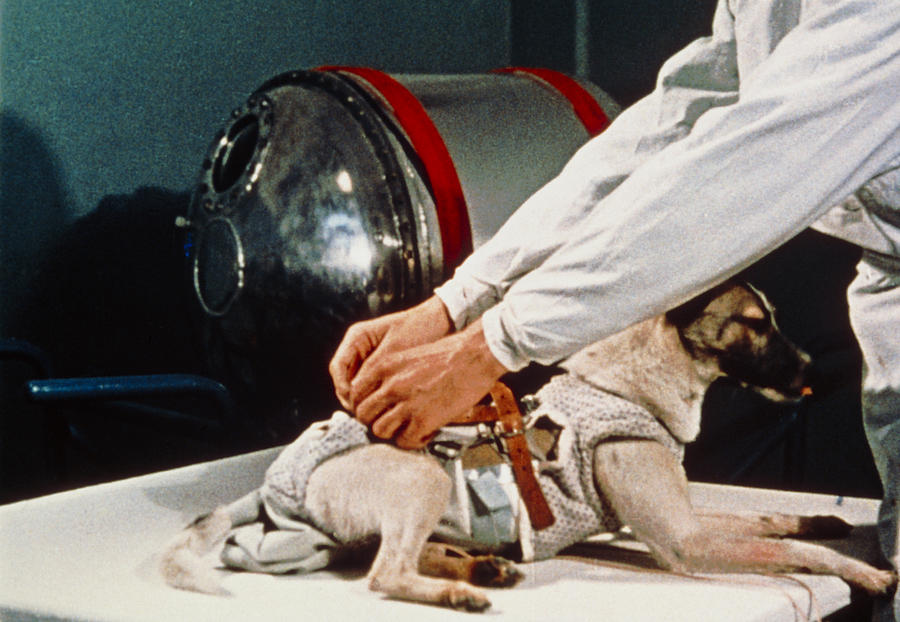We often talk about the first people to go to space, but what about the first dog? Let’s take a look at the story of Laika, the first dog in space.
The Soviet Union surprised the world in 1957, with the launch of Sputnik 2. On board the small satellite was one passenger – a small dog named Laika. Laika was not the first animal in space – the United States had begun experimenting with animals on rockets as early as 1947.
At the beginning of the space race, no one truly knew what the effects of weightlessness would be. Animals, such as dogs, monkeys, and chimpanzees, were used to test the safety and the plausibility of launching an organism into space and having it return unharmed. Since then, animals have continued to play a vital role in understanding the effect of microgravity on the processes of life.

Sadly, when Laika was launched into space on board Sputnik 2 in 1957, she passed away within hours from overheating. At the time, however, it was reported that she survived for six days before running out of oxygen.
Motnik and Sputnik
Laika was a young, stray dog from the streets of Moscow. The Soviet researchers decided to use stray dogs, because they assumed that they had already learned how to survive in harsh conditions from living on the streets. Laika and two other dogs were trained to travel in space by keeping them in small containers similar to the conditions aboard the rocket. Scientists developed a nourishing gel for them to eat, that would be their food in space.
Laika’s name was initially Kudryavka or Little Curly, but it was popularized on a global scale as Laika, a Russian word for several types of dogs. US correspondents called the pup Muttnik, as a play on the word “Sputnik.” When Laika was launched into space, it was not expected that she would return alive, since methods for re-entering Earth’s atmosphere were not yet developed at the time. It is unclear how long Laika lived in space, likely just a few hours. Sputnik 2 burned up in Earth’s upper atmosphere in 1958.

Death of Laika in space
Medical probes placed on Laika showed that her pulse rate release rose to three times its normal level during the launch. Towards the beginning of weightlessness, Laika’s pulse rate diminished.
A researcher named Dr. Malashenkov revealed how Laika was killed in space. The remote measurement of the Sputnik 2 container showed that the humidity and temperature increased dramatically after the launch of the rocket. After five to seven hours in flight, no signs of life were obtained from Laika. By the fourth circle around the earth, it was clear that Laika had not survived the overheating and stress of space travel.
Previously, it was thought that Laika had survived for some four days in space, and perhaps even as long as seven days, when the Sputnik transmitters disappeared. Although she only lived in space for a few hours, Laika’s place in space history is solidified, and the information this mission provided showed that the living form can endure periods of weightlessness and that space travel would in fact be a possibility for humans.









